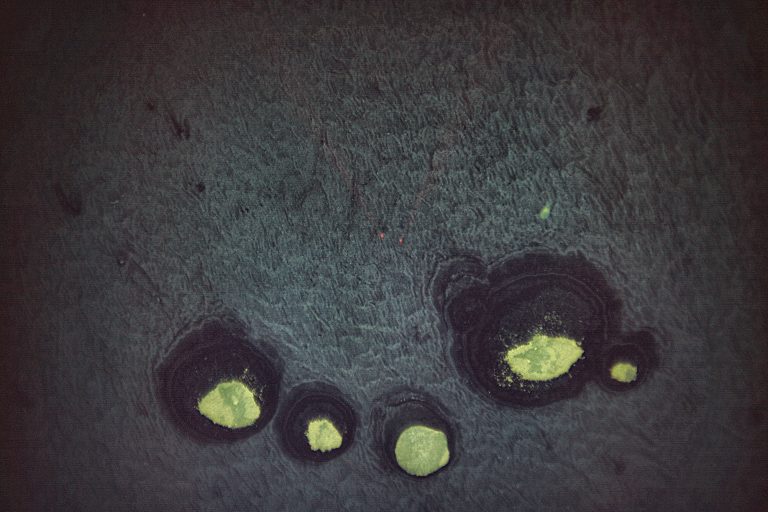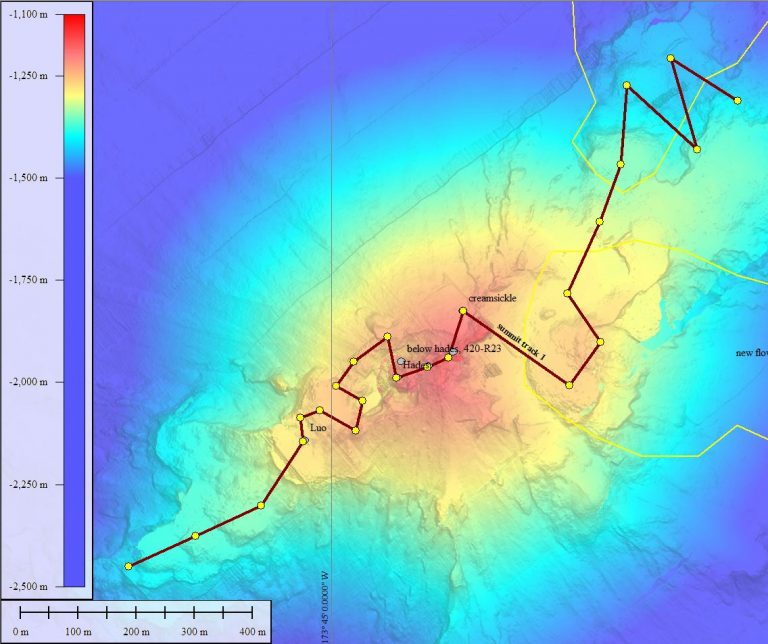So you want to go to the seafloor. You want to go exploring, see some amazing stuff, do some interesting science, and share it with the public. OK, you have got to know what to pack, how to plan the itinerary, to know how to make the most of your time, and be ready to change your plans on the fly if you find something unexpected. This means having a good map, a series of geographic dive targets called waypoints, a team of eager observers, an idea of which tools you want on the vehicle that day, and a realistic sense of how much ground you can cover, how easy or difficult various tasks will be for the pilots to execute, and how the vehicle will likely perform in the terrain and sea conditions at the site. It is a long list.
Getting to the Water
The professional teams that run the major submersible programs in the world, such as the ROV group at Schmidt Ocean Institute (SOI) and their ROV SuBastian, do most of the real work, making sure the complex systems on these vehicles are in working order and up to the task of extreme-condition diving. They can get you to the deep sea, but it is up to the scientists to design the field program. This starts when the program is proposed and planned. After it is funded, the process continues with months of discussions between the science leads and the submersible operator about the technical and logistical needs, systems and that will be mounted and used on the vehicle, and dive site characteristics.

Planning Ahead
I have had the pleasure of planning two separate ROV expeditions with Schmidt Ocean Institute this past year: the #SeaLevelSecrets expedition in August and September 2017 and the current #UnderwaterFire expedition in November and December 2017. The goals and working conditions are really different, so the dive planning was varied. Before SuBastian ever gets near the water, we prepare a detailed plan for each dive that includes the sites we will visit, dive objectives, digital bathymetric maps of the sea bed, subsea conditions like currents, expectations for the dive, specimen sampling protocols, amount of terrain we wish to cover, and the depth ranges we will be working in. For this expedition we are lucky enough to have data such as high-resolution bathymetric maps of the sea floor, chemical sensor data, and even a few photographs that was collected on leg one from the AUV Sentry. We have been pouring over it for the past few days, considering it with the info we have from previous years’ work in our study area, and laying the ground work for what will hopefully be a truly memorable expedition.

Planning for the first few dives has been split between myself and Bill Chadwick. We lay out plans for various sites, share them with each other, and then discuss, so we can hit the sea floor with the best possible plan. The plan for the first ROV SuBastian dive is to visit the West Mata Summit. We looked at all of our existing data, some of it from Leg One of the expedition and some of it from our prior work in this area, to select a rough path for the vehicle to follow. Then a dive plan is made and discussed with the pilots, and once ready, it is shared around the ship and with the shore-team.

Ready on Day One.
Our first dive is planned for the morning of the 27th (26th if you are in North America). It is a survey of new eruption sites and places with other changes at West Mata, as well as re-visits to sites we were at in 2009 and 2012 (if they are still there) to get an idea of what things look like on the ground. This includes sites highlighted in previous blog posts. We will then return to the summit on subsequent dives for some more detailed sampling, and visits to other new eruption sites at the base of the volcano. All and all we plan to make at least 20 dives. For those of us who do this often, it is a labor of love. I anticipate each dive with as much enthusiasm as the very first one I took nearly 20 years ago in the Hawaii submersible Pisces V. Discoveries await.

